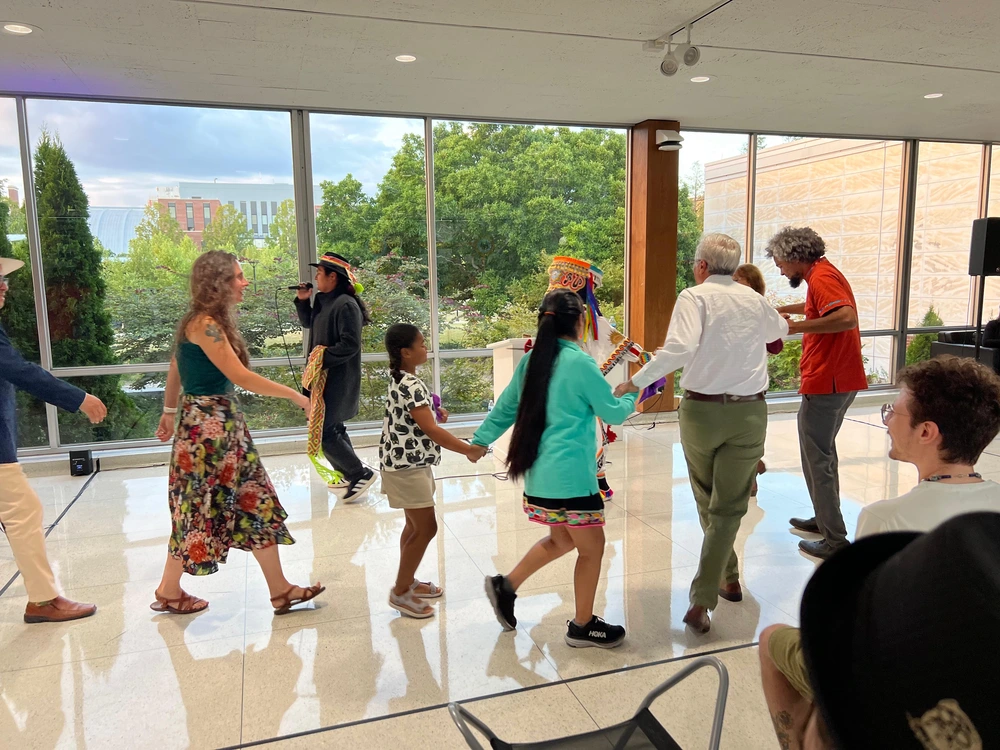
On August 28, the Krannert Art Museum (KAM) reopened with the debut of its reinstalled exhibition, Fragmented Histories: Andean Art Before 1600. The gallery showcases more than 700 objects, from ceramics and textiles to metalwork, representing centuries of old Andean artifacts with a renewed focus on their cultural, historical, and social contexts. The exhibit emphasizes the fragmented and mobile histories of these objects, many of which were displaced or looted, while inviting visitors to reflect on the stories and networks they represent.
The evening featured a performance by Liberato Kani, a Peruvian Quechua hip-hop artist, alongside a Danzante de Tijeras from Peru, a traditional scissor dancer whose intricate footwork brought ancient rituals to life. The combination of music and dance transformed the museum into a living cultural stage, connecting ancient Andean heritage to contemporary Indigenous creativity.
A new digital platform allows descendant communities to interact with the collection, ensuring their perspectives shape the narrative. This approach reflects KAM’s commitment to decolonial museology, positioning the museum as a space where history is actively interpreted, not just displayed.
The reopening was a celebration of cultural connection, proving that Andean stories continue to live, move, and inspire today.